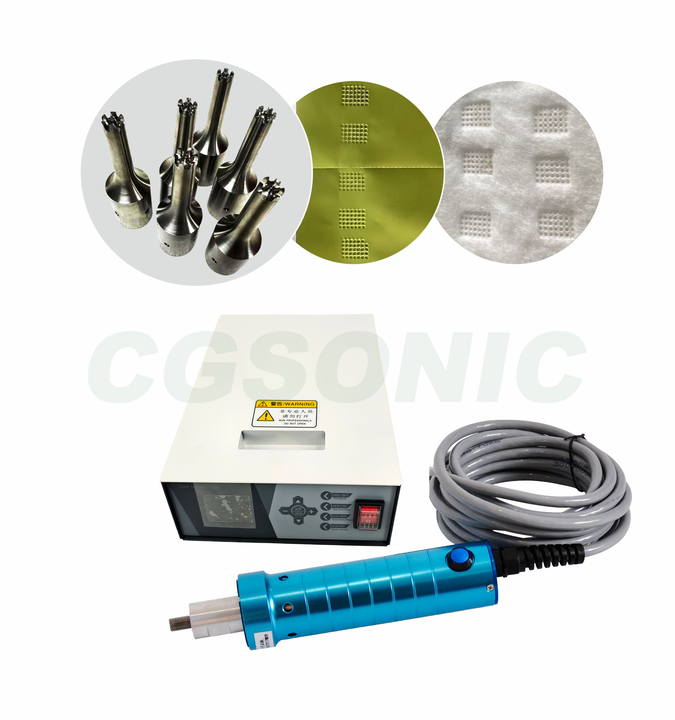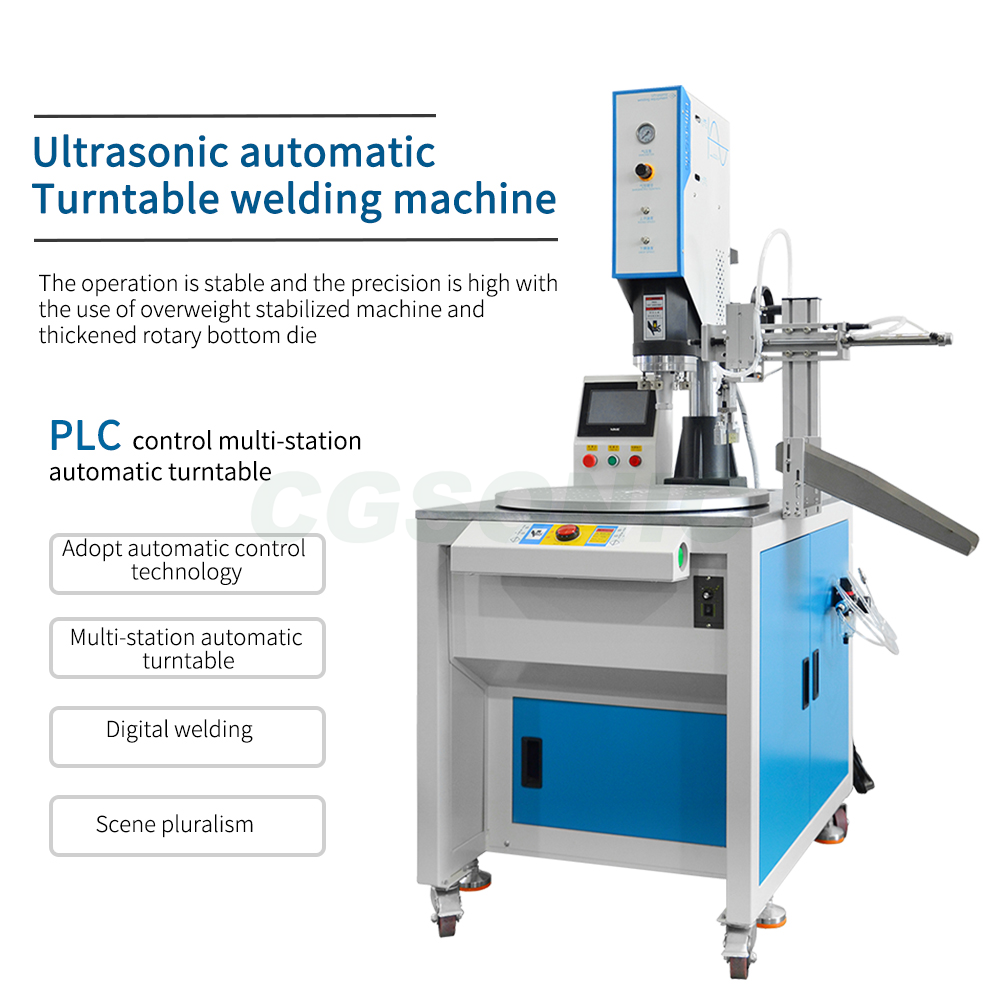0102030405
Double breakthrough in cost reduction and efficiency improvement! Chengguan ultrasonic spot welding unlocks new possibilities in the production of automotive interior and exterior trims
2025-07-01
In the wave of the automotive industry's transformation towards intelligence and greenness, Ultrasonic Welding, with its technical advantages of non-contact precision welding, fully automated adaptation and zero pollution, has formed a dimensionality reduction competition with traditional hot melt/laser welding and mechanical fixing processes, becoming the golden process for the manufacturing of new energy vehicle exterior parts. Ultrasonic spot welding has significant advantages over traditional welding (such as hot plate welding, vibration Friction Welding, gluing or mechanical fastening) in the manufacturing of automotive interior and exterior decoration, especially in terms of lightweight, efficiency and environmental protection.
| Dimensions | Ultrasonic welding | Conventional welding process (hot plate welding or gluing) |
| Welding Principle | High-frequency mechanical vibration energy (20~40kHz) generates heat through local friction, achieving rapid connection of thermoplastic materials or thin layers of metal. | The material is melted by an external heating source (such as a hot plate or hot air) and the connection is solidified after cooling. |
| Energy input | Local precision heating, small heat affected zone (only 0.1-0.5mm contact surface). | The whole or large area needs to be heated, and the heat affected zone is large (may affect the surrounding 5-10mm). |
| Time-consuming process | Ultrasonic spot welding is usually single-point welding is completed within 0.1~1 second, without preheating or continuous heating, and the energy consumption is only 10%~20% of hot plate welding. | Traditional hot plate welding or gluing takes seconds to minutes (including curing time). |
| Supplementary Materials | No welding rods, glue or fasteners are required, it is a purely physical connection. It eliminates the cost of purchasing, storing and curing equipment for adhesives. | Welds, clips or adhesives may be required, adding cost and weight. |
| Material compatibility | Especially suitable for lightweight use in automobiles engineering plastics (such as ABS, PC, PA) and thin-walled parts (such as instrument panels, door panels, grilles), can achieve reliable connection between plastic and metal inserts (such as wiring harness fixings). | Traditional welding can easily cause deformation of heat-sensitive materials, and adhesives are prone to aging in such scenarios. |
| Environmental Protection and Sustainability | No adhesive volatilization, reducing workshop ventilation costs. | Pure thermoplastic welded joints can be directly recycled after being crushed, while adhesive composite parts need to be separated and processed. |
Core advantages of automotive exterior applications
1. Precision and appearance advantages: improving the assembly quality of exterior parts
- Micron-level welding accuracy: Ultrasonic welding can achieve 0.01mm-level alignment accuracy by precisely controlling the welding head pressure, amplitude and time through the CNC system. It is especially suitable for seamless splicing of automotive exterior parts (such as bumper deflectors and grille lamp group frames), avoiding uneven gaps or misalignment caused by heating deformation in traditional hot melt welding.
- Surface effect without visible defects: Traditional hot melt welding may cause surface burns, bubbles or molten material overflow due to high temperature, affecting the aesthetics of exterior parts (such as body trims, rearview mirror housings). Ultrasonic welding only acts on the contact surface, with no burn marks or molten material residue on the surface, meeting the high-quality appearance requirements of automotive exteriors.
2. Mechanical performance advantages: Enhanced structural strength and reliability
- Molecular bonding strength: Ultrasonic welding forms a welding surface by fusing the molecular chains of the materials. The tensile strength can reach 80%-90% of the strength of the material itself, which is better than traditional snap connections (relying on mechanical snap-on force and easily loosened due to vibration) or hot melt welding (relying on cooling and solidification, and there may be internal stress concentration). Case: After ultrasonic welding was used on the bumper bracket of a certain car model, the breaking load in the impact test (simulated collision) increased by 40%.
- Anti-vibration and aging resistance: Automotive exterior parts are exposed to high and low temperatures and vibration environments for a long time. Ultrasonic welding solid-state connections have no risk of glue aging or fastener corrosion, and have better stability. For example, the ultrasonic welding of the roof rack bracket can withstand temperature cycle tests from -40℃ to 80℃, while traditional screw fixation may loosen due to thermal expansion and contraction.
3. Production efficiency advantage: adapting to automation and large-scale production
- Fast welding and multi-station integration: Ultrasonic welding equipment can be integrated into automated production lines, and robots can be used to realize unmanned operation of the entire process of "picking up - positioning - welding - testing". Taking automobile grille welding as an example, traditional hot melt welding requires manual loading and unloading + segmented heating, and it takes about 20 seconds for a single piece; ultrasonic welding can be completed simultaneously with multiple welding points, each piece only takes 3 seconds, which increases the efficiency by more than 6 times.
- Reduce post-processing steps: Traditional welding may require manual trimming, grinding or repainting (such as covering welding marks), while ultrasonic welding is formed in one step and can directly enter the assembly stage, shortening the production cycle.
4. Material compatibility advantage: expanding the freedom of exterior design
- Dissimilar material welding capability: Ultrasonic welding can achieve composite connection between plastics (such as PP+PE) and plastics and metals (such as nylon + aluminum alloy), while traditional hot melt welding is usually limited to the same type of plastic welding. This makes it possible to design lightweight automotive exteriors, such as:
- Using "plastic matrix + metal inserts" to replace all-metal parts can reduce weight while maintaining structural strength.
- When welding transparent parts (such as taillight covers), avoid the loss of light transmittance caused by traditional laser welding (laser welding may produce internal carbonization spots).
- Adaptability to thin-walled parts and complex structures: For thin-walled exterior parts with a thickness of ≤1mm (such as spoiler trim strips), ultrasonic welding can avoid the risk of burn-through in traditional hot melt welding; for parts with curved surfaces and hollow structures (suchS as shark fin antenna housings), customized welding heads can be used to achieve multi-angle precision welding, while traditional processes may require assembly of separate parts, increasing assembly complexity.
5. Environmental protection and cost advantages: meeting the sustainable development needs of the industry
- No pollutant emissions: No need to use adhesives, solvents or electroplated fasteners, reducing VOCs (volatile organic compounds) emissions, complying with EU REACH and other environmental regulations, and especially suitable for the green manufacturing trend of new energy vehicles.
- Comprehensive cost reduction:
- Material cost: Eliminate consumables such as welding rods and glue, and lightweight design reduces material consumption.
- Equipment cost: The initial equipment investment is similar to that of laser welding, but the maintenance cost is lower (no laser head loss), and the energy consumption is only 1/3-1/2 of that of hot melt welding.
- Labor cost: high degree of automation, reducing the number of operators and labor costs.






















